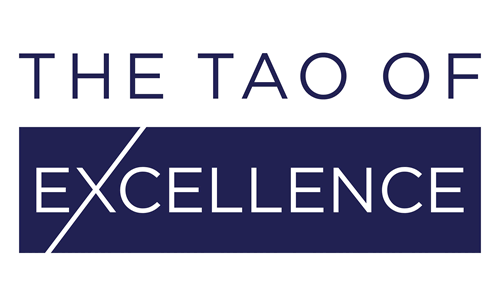Gaining your specialist insight
Six Sigma is both a technique and a way of thinking that enables companies to create an environment of continuous improvement. It empowers and inspires individuals across an organisation to work together to find solutions that will improve processes and procedures—making them more efficient, effective and financially beneficial (for more detail on the Six Sigma methodology, read Part 1 of this article).
Six Sigma is built to improve processes by eliminating nonconformity and errors or for decreasing process variations by 5% over time. It can also be directly applied to the quality management and regulatory requirement of Corrective Action Preventive Action (CAPA), as outlined in ISO 13485 and the FDA’s 21 CFR part 820, as well as other quality management guidelines and standards.
In that instance, its tools and techniques enable manufactures to improve, measure and monitor the quality management system processes and contribute the relevant insight for improving the safety and performance of medical devices.
Specifically, Six Sigma can:
- “demonstrate the ability of the processes to achieve planned results”;
- reveal the best “correction and corrective action”;
- “maintain the continued suitability, adequacy and effectiveness of the quality management system as well as medical device safety and performance.”[1]
The tools and applications you can learn on our courses will teach you how to shift your focus from an interior perspective to an exterior one. This includes looking at the way your role in a company interacts with and effects your wider organisation—and ultimately, how changes and adjustments can positively impact your customer and lead to great financial returns.
Whilst the five distinct phases of this methodology—known as DMAIC (Define, Measure, Analyse, Improve, Control)—can be applied to any sector, we decided to design a series of highly specialised Six Sigma courses for medical device manufactures.
We’ve applied our own in-depth expertise and experience—both in this industry and during the live improvement projects we’ve worked on with our clients—to create a training program tailored to the highly specialised and regulated field of medical device manufacturing. Our specific expertise in this area means that we help you to implement changes actually work in practice, not just in theory.
Green belt
Six Sigma Green belt training gives individuals the mindset, knowledge and expertise to create, manage and implement their own improvement projects.
Our specialist Green belt training is one the highest value courses of its kind on the market. As well as teaching you how to use software specially designed for statistical analysis, our program incorporates advanced techniques with directly applicable activities to ensure individuals gain the knowledge, experience and confidence to apply Six Sigma principles, tools and techniques on a daily basis.
The structure
Our Green belt course is split into easily digestible modules. Most recently, this course was described by a director of Research & Development Manufacturing in Switzerland as “perfectly structured” and one of the best he had attended over the past 30 years of his professional career.
As the highest certification before Black belt level, Green belt training involves learning and practising the Six Sigma DMAIC project methodology in-depth and includes:
- using advanced statistical and analytical tools and techniques;
- case studies and exercises that are directly applicable to the medical devices industry;
- a substantial section devoted to Quality Assurance, testing, regulations, compliance and project management skills;
- an individual hands-on project, chosen and developed by each training participant to put the Six Sigma methodology and techniques into practice;
- specialist coaching from trainers with extensive and relevant experience who can actively support and advise participants during each DMAIC phase and throughout the training program.
The timeline
Part 1 of our Green belt course is a total of 9 days taken over 4–6 months. Each module is 1–3 days (including a final exam) and is devoted to a DMAIC phase (Define, Measure, Analyse, Improve, Control).
In Part 1 of the certification, participants will practise, develop and increasingly focus on their own Six Sigma project. Following the test, individuals will typically take a further 6 months to independently finalise their Six Sigma project before receiving Part 2 of their Green belt certification.
The results
Our latest Green belt course was described by participants as dynamic, practise and user-orientated, sophisticated and relaxed. They found the modules both technical and analytical, and an excellent overview of the applicable methods. Feedback statics have shown that:
- 100% of the group found the course overall very good to excellent;
- 100% found the course either interesting or very interesting and felt the specialised topics, activities and examples were either very good or exactly applicable;
- 100% found the trainers expertise excellent.
How to book
Booking a specialised Six Sigma course could be best way to maintain your compliance by ensuring the effectiveness of your quality management system as well as the safety and performance of your medical device.
Our courses book up fast so follow us on LinkedIn, Twitter, Instagram or Facebook to be the first to hear about our upcoming dates. We are also in the midst of finalising the details of a specialised Six Sigma course dedicated to Quality Assurance—so watch this space for more information!
You can book via our Courses & Events page on our website or contact us directly for your consultation. We can also be booked for private courses or modules for your company, and our training will soon be available to book via Ausbildung Weiterbildung. We look forward to hearing from you.
 Jasminka Roth
Jasminka Roth
Founder and Director of The Tao of Excellence
Phone
+41 52 685 51 65
Email
[email protected]
Did you like this article? Follow us on LinkedIn and Twitter!
Recommended reading
- Discovering Statistics Using R: a guide to understanding and practising statistical analysis.
- The Lean Six Sigma Pocket Toolbook: a reference book for what the tools and techniques are, how they work, and which to use.
- Medical Device Design for Six Sigma: a guide to integrating Six Sigma principles into the medical devices development cycle.
[1] International Standard ISO 13485, Medical devices – Quality management systems – Requirements for regulatory purposes, 2016, p 23–25.

